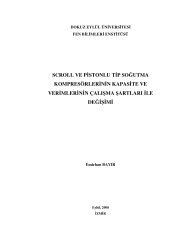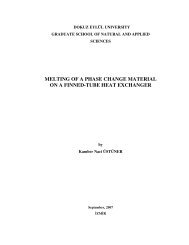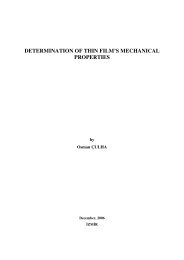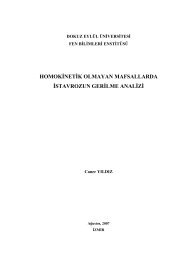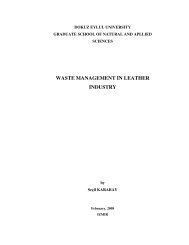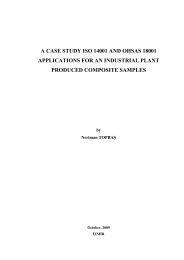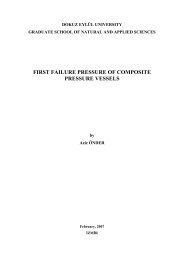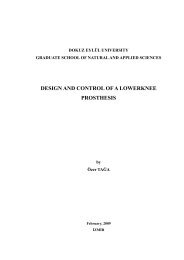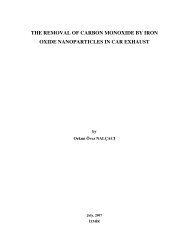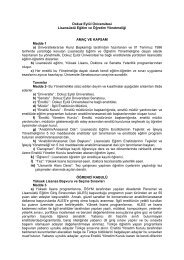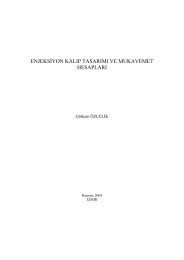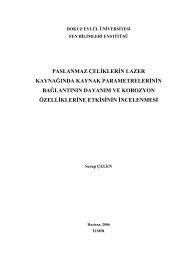A numerical study on the thermal expansion coefficients of fiber
A numerical study on the thermal expansion coefficients of fiber
A numerical study on the thermal expansion coefficients of fiber
Create successful ePaper yourself
Turn your PDF publications into a flip-book with our unique Google optimized e-Paper software.
24<br />
(orthorhombic) <strong>of</strong> polyethylene has <strong>the</strong> dimensi<strong>on</strong>s <strong>of</strong> 0.741, 0.494, and 0.255 nm<br />
(Chawla, 1998). There are four carb<strong>on</strong> and eight hydrogen atoms per unit cell. Its<br />
strength and modulus are slightly lower than those <strong>of</strong> aramid <strong>fiber</strong>s but <strong>on</strong> a per-unitweight<br />
basis, specific property values are about 30% to 40% higher than those <strong>of</strong><br />
aramid. As is true <strong>of</strong> most organic <strong>fiber</strong>s, both polyethylene and aramid <strong>fiber</strong>s must<br />
be limited to low-temperature (lower than 150°C) applicati<strong>on</strong>s. High-modulus<br />
polyethylene <strong>fiber</strong>s are hard to b<strong>on</strong>d with any polymeric matrix. Some kind <strong>of</strong> surface<br />
treatment must be given to <strong>the</strong> polyethylene <strong>fiber</strong> to b<strong>on</strong>d with resins such as<br />
epoxy and (PMMA). Photomicrographs <strong>of</strong> polyethylene <strong>fiber</strong>s are given in Figure<br />
2.9.<br />
Figure 2.9 Photomicrographs <strong>of</strong> polyethylene <strong>fiber</strong>s (Wypych, 2000).<br />
2.2.2.5.3 Aramid Fibers<br />
Aramid <strong>fiber</strong> is a generic term for a class <strong>of</strong> syn<strong>the</strong>tic organic <strong>fiber</strong>s called<br />
aromatic polyamide <strong>fiber</strong>s. The U.S. Federal Trade Commissi<strong>on</strong> gives a good<br />
definiti<strong>on</strong> <strong>of</strong> an aramid <strong>fiber</strong> as “a manufactured <strong>fiber</strong> in which <strong>the</strong> <strong>fiber</strong>-forming<br />
substance is a l<strong>on</strong>g-chain syn<strong>the</strong>tic polyamide in which at least 85% <strong>of</strong> <strong>the</strong> amide<br />
linkages are attached directly to two aromatic rings”. The basic chemical structure <strong>of</strong><br />
aramid <strong>fiber</strong>s c<strong>on</strong>sists <strong>of</strong> oriented para-substituted aromatic units, which make <strong>the</strong>m<br />
rigid rodlike polymers (Figure 2.10). The rigid rodlike structure results in a high<br />
glass transiti<strong>on</strong> temperature and poor solubility, which makes fabricati<strong>on</strong> <strong>of</strong> <strong>the</strong>se<br />
polymers, by c<strong>on</strong>venti<strong>on</strong>al techniques, difficult.



